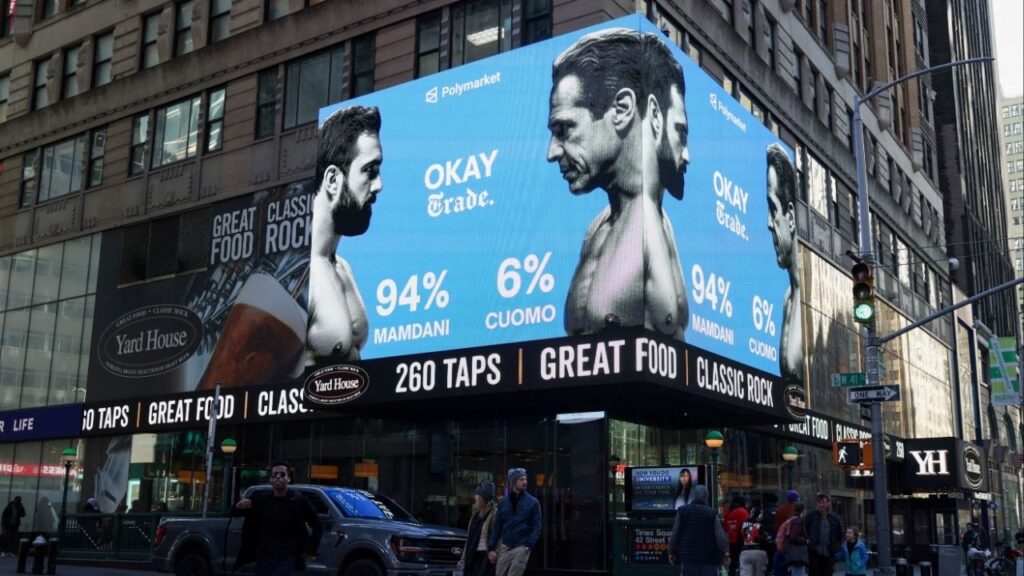A model truck at Slate Auto’s design center in Troy, Mich., on April 30, 2025. The company is backed by venture capital firms and Jeff Bezos, the Amazon founder. (Emily Elconin/The New York Times)
Share
|
Getting your Trinity Audio player ready...
|
When Slate Auto, a startup, unveiled a roughly $25,000 electric pickup truck last month, social media lit up with comments. Many people saw the no-frills vehicle, with an easy-to-repair body and nostalgic hand crank windows, as a refreshing antidote to today’s overstuffed and increasingly unaffordable cars.
How unaffordable? Average monthly payments on new cars have soared to $739 in March from $537 in January 2019, according to Cox Automotive. The average new car costs $47,400, with electric models around $59,200. High interest rates, now around 9.4% for a 72-month loan, have made cars even more of a financial stretch.
“Prices and interest rates are both high and stuck,” said Mark Schirmer, director of industry insights for Cox Automotive. “If you haven’t been in the market since 2018, it’s got to be shocking what a car costs.”
Trump Tariffs on Imported Cars Have Consumers Scrambling
President Donald Trump’s tariffs of 25% on imported cars and parts have consumers scrambling to buy before prices rise even more. Cars that cost less than $30,000 are especially vulnerable — nearly 80% of those are subject to tariffs. They include consumer staples such as the American-made Honda Civic and Toyota Corolla, which rely on imported parts. Supplies of budget models are expected to shrink, and automakers may stop importing certain models entirely.
Enter Slate, a company based in the Detroit suburbs backed by venture capital firms and Jeff Bezos, the Amazon founder.
Chris Barman, a former Fiat Chrysler engineer and Slate’s CEO, said the Slate truck was expressly designed to ease sticker shock, although it won’t be available until late 2026. The company plans to produce the pint-size truck at a retrofitted printing plant in Indiana, with a capacity for 150,000 a year.
True to its name, the truck is designed to be a blank slate to which buyers can add more than 100 accessories, like power windows and heated seats, as their budgets allow or needs change. There is no built-in stereo or touch-screen display, but there are docks for phones or tablets, saving money and avoiding the digital obsolescence that often plagues auto entertainment and navigation systems.
“We think hardworking Americans are looking for good value for the money,” Barman said in a recent interview.
That message appealed to Liv Leigh, 41, who hopped inside a Slate truck during its public debut at the Long Beach Airport in California in April. Leigh, a biomedical designer and electric car enthusiast, paid $50 to reserve a Slate.
She watched the company’s employees transform the two-seat pickup into a five-passenger sport utility vehicle in about one hour, with a clever conversion kit aimed at do-it-yourself owners. Leigh appreciated the truck’s tidy size, shorter than a Civic, and its modest 150-mile range.
“I love the idea of an absolute base, beater truck, where I can stick a dog or muddy bikes or plywood in back,” Leigh said. “I don’t need a giant vehicle to haul stuff.”
Barman said efficient design and production were key to the company’s promised low prices. The truck’s gray plastic-composite body panels eliminate any need for a steel body-stamping plant or paint shop, which can cost automakers many millions of dollars.
Where a Ford Model T, an egalitarian car of another age, famously came only in black, Slate will offer vinyl body wraps in an array of colors and styles. Buyers can also opt for a larger, factory-installed battery with a 240-mile range.
“That all keeps costs down, but also feeds into giving customers freedom of choice,” Barman said. “They can outfit the vehicle the way they want it, not the way a manufacturer has designed it.”
Consumers Hope for Federal Tax Credit
Slate hopes that a U.S.-based supply chain, including batteries made by SK On, a South Korean company, will make the pickup eligible for a $7,500 federal tax credit. Republican lawmakers on Monday released a budget bill that would eliminate that incentive and dismantle other Biden-era climate and energy policies.
That all depends on Slate’s successfully navigating a treacherous path for electric vehicle startups. Several young automakers, including Fisker, Nikola and Canoo, have sought bankruptcy protection and shut down.
With or without subsidies, Slate has a viable business plan, Barman said.
The company hopes to price its truck in the mid-$20,000s before government incentives, which would undercut the Nissan Leaf, which is the most affordable electric car at $29,300 but no longer eligible for tax credits. Chevrolet plans to offer a redesigned Bolt SUV by year end for roughly $30,000. The General Motors brand intends the Bolt to qualify for the tax credit, dropping its effective price to roughly $22,500.
Erin Keating, the executive analyst of Cox Automotive, praised the Slate truck’s ingenuity. But she said a pickup with two seats, short range and a bare-bones interior might not appeal to American car buyers who have grown accustomed to having many tech and creature comforts.
“There’s nothing wrong with trying to crack the affordability crisis, but I don’t see this as a massive volume seller,” Keating said. “Ultimately, this is an extremely small EV with almost nothing in it, in a market with a growing number of affordable choices with much longer range.”
As much as any vehicle category, the United States’ pickup trucks epitomize how cars have changed over the past several decades, mostly by becoming bigger, more powerful and a lot more expensive. Some lavish pickups can cost as much as large European luxury sedans. Electric trucks from Tesla, Rivian and Ford range from $70,000 to more than $100,000.
Barman sees a market opening for entry-level truck fans, families shopping for a second car, empty nesters, and businesses such as landscapers, contractors and delivery workers. The company expects to sell many trucks to people who otherwise would buy a used car, the average price of which is $26,000.
One big challenge for Slate, or other companies hoping to sell more affordable cars, is that despite what they say they want, many Americans don’t seem to buy such cars.
Keating noted that roughly two dozen models on the market start at less than $25,000. All are small cars or SUVs, including the market’s lowest-price car, the $18,300 Nissan Versa.
Nearly every midsize family sedan starts at less than $30,000, including the Honda Accord, Toyota Camry and Hyundai Sonata. But many Americans have rejected those cars in favor of bigger vehicles. SUVs, pickups and minivans now account for more than 80% of the market.
—
This article originally appeared in The New York Times.
By Lawrence Ulrich/Emily Elconin
c. 2025 The New York Times Company


















